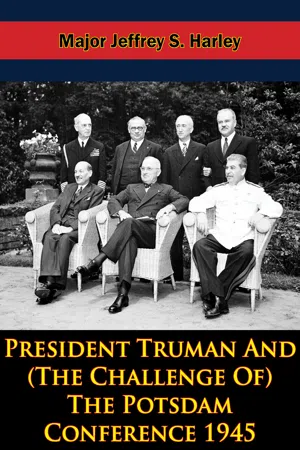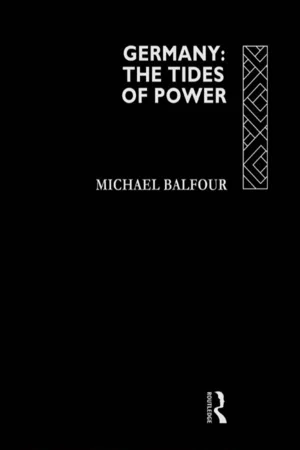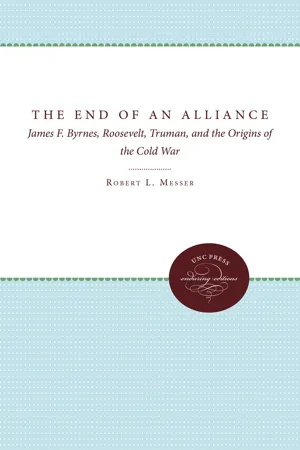History
Potsdam Conference
The Potsdam Conference was a meeting held in Potsdam, Germany, in 1945, between the leaders of the United States, the Soviet Union, and the United Kingdom. The conference aimed to discuss the post-World War II reorganization of Europe and the establishment of peace. Key decisions made at the conference included the division of Germany and the implementation of war reparations.
Written by Perlego with AI-assistance
Related key terms
4 Key excerpts on "Potsdam Conference"
- Col. Uwe F. Jansohn(Author)
- 2015(Publication Date)
- Lucknow Books(Publisher)
THE Potsdam Conference
“Potsdam was a convenient spot, and that was doubtless Stalin’s reasoning for choosing it (to conduct the final conference of the Great Alliance). But the place had a meaning for him, too, that escaped the notice of ‘Churchill and Truman. Potsdam is famous not for the Cecilienhof Palace, where the conference meetings took place, but for the palace of San Souci, built by Frederick the Great of Prussia in 1745. It was...in the rooms of Sans Souci, that Frederick doubled the size of the Prussian Army .For Stalin, then, Potsdam was a memorial to the beginning of Prussian militarism, the end of German military might, and the continuous struggle in peace and war for power. Potsdam was an appropriate setting for the aims of all three leaders who met to confer, though only Stalin knew it.”{110}Truman and his party arrived in Potsdam on the evening of 15 July 1945. Churchill was already there and he had brought his potential successor Atlee with him. The results of the British parliamentary elections would be announced on 27 July 1945 and the British delegation wanted to ensure that pending the outcome a smooth handover would be guaranteed. Since Stalin, who had suffered a minor heart attack, which was a well-kept secret, had not yet arrived at Potsdam the opening session of the conference, scheduled for the afternoon of 16 July 1945, was delayed one day. Truman took the opportunity to receive Churchill for a “social visit” in the morning. Despite the informal nature of the meeting some general conclusions could be made. Truman stated in his memoirs that he and Churchill never had “a serious disagreement about anything, although they argued about many things.” On the fundamentals of the great principles they were in great agreement. Another indicator that the British Prime minister would follow Truman’s strategy was that he had not prepared his own agenda of talking points to present at the meeting.{111} In their discussion about the latest news from the Pacific theatre, there was a first slight change in Truman’s objectives in drawing in the Allies—especially the Soviets—at any prize. Because of recent positive reports Truman had received from East Asia in the last days, he appreciated Churchill’s generous offer to provide British troops, but he stated that the war in the Far East was going well enough without the British and the Soviet help.{112} Churchill enjoyed the meeting and was impressed with Truman’s “gay, precise, sparkling manner and obvious power of decision.”{113}- eBook - ePub
- Michael Balfour(Author)
- 2004(Publication Date)
- Routledge(Publisher)
discussions, they did not even obtain written confirmation of what had been agreed. They imagined that they had only to consider the rights and interests of their own troops. Only when they met again ten days later to settle how the city should be ruled were they faced with a Russian demand that supplies of food and coal for the Western Sectors must be obtained and brought from the Western Zones; only later still did the question arise of how far and under what conditions German persons and goods possessed rights of movement between the city and the West.THE Potsdam Conference
The meeting which took place at Potsdam between 17 July and 2 August 1945 was not a peace conference and was in no position to dictate a Treaty to the leading enemy state, since there was no German government to sign such a document. Instead the conclusions were given to the world in a ‘Protocol of Proceedings’ drawn up somewhat hastily in the closing hours; it was not considered to need ratification by either Congress or Parliament. Thirteen of its twenty-one sections, amounting to about two-fifths of its total space, did not concern Germany.The Political Principles, based upon an American draft, were agreed to without much argument. Germany was to be completely disarmed and kept indefinitely in that condition. The Nationalist Socialist Party and everything connected with it was to be dissolved: all Nazi laws which provided the basis of the regime or established discrimination on grounds of race, creed or political opinion (though not necessarily other legislation passed since 1933) were to be cancelled. All members of the Party who had been ‘more than nominal participants in its activities’ were to be removed from office, while leaders and high officials were to be interned and war crimininals were to be brought to judgement. A significant clause laid down that ‘so far as practicable’ the German population throughout the country was to be treated uniformly. Preparations were to be made for the eventual reconstruction of German political life on a democratic basis, particularly by the encouragement of democratic political parties and the introduction of selfgovernment from local councils upwards. Freedom of speech, press and religion were (subject to considerations of security) to be permitted. Although no central government was to be established for the time being, five or more central administrative departments were to be set up, which were intended to issue to lower levels the orders needed to get the policy of the Control Council put into execution. One of the objects of the Occupation was declared to be the convincing of the German people that they had suffered a total military defeat and could not escape responsibility for the inevitable distress and chaos which they had brought on themselves. - eBook - ePub
Prompt and Utter Destruction, Third Edition
Truman and the Use of Atomic Bombs against Japan
- J. Samuel Walker(Author)
- 2016(Publication Date)
- The University of North Carolina Press(Publisher)
Chapter 5: Truman and the Bomb at Potsdam
When President Truman left the United States aboard a naval cruiser on July 7, 1945, to travel to Potsdam, a suburb of devastated Berlin, he was not looking forward to meeting with Generalissimo Stalin and Prime Minister Churchill. “Talked to Bess last night and the night before,” he confided to his diary the night he departed. “She wasn’t happy about my going to see Mr. Russia and Mr. Great Britain—neither am I.” The president went on to write: “How I hate this trip! But I have to make it—win, lose or draw—and we must win.” He expressed the same sentiments in a letter to Mrs. Truman the same day: “I sure dread this trip, worse than anything I’ve had to face.”1Truman’s anxiety about attending the conference was understandable. He was still a novice at his job and still learning the complexities of the many problems he faced. He was traveling to meet and doubtlessly disagree on important issues with two crusty and renowned leaders who must have seemed larger than life, even to the president of the United States. He was determined to protect American interests but worried about how successful he would be in jousting with his formidable, tenacious, and experienced counterparts. Truman sought to educate himself about the background of the questions that would be discussed at Potsdam and about the proceedings of previous wartime summit conferences. He told Mrs. Truman that he would “have to depend on Leahy and Byrnes” and that despite hating to take the trip, he recognized that he was “elected to do a job.” He added rather wistfully: “Here’s hoping I can do it.”2The agenda for Potsdam featured many complex and divisive issues. Ending the Pacific war was only one of many questions facing Truman, Churchill, and Stalin. The focus of the conference was the future of Europe: the key matters to be discussed included admission of Italy into the United Nations; diplomatic recognition of Bulgaria, Rumania, Hungary, and Finland by the United States and Great Britain; the assessment of reparations from Germany and its allies; disposition of the German fleet; and setting the boundaries of Germany and Poland. Although Truman seemed uneasy about how he would get along with the sometimes difficult Churchill, he was more concerned about dealing with Stalin. He hoped that the atomic bomb would enhance his ability (and no doubt his self-confidence) in negotiating over issues at Potsdam, though he did not specify exactly how he thought the bomb would improve his leverage or how he might wield it if he had the opportunity. In Truman’s mind, the primary American objective was to secure a firm pledge from Stalin about the timing of Soviet entry into the war against Japan; apparently he had concluded that the bomb would make his negotiations with Stalin over this issue easier. - eBook - ePub
The End of an Alliance
James F. Byrnes, Roosevelt, Truman, and the Origins of the Cold War
- Robert L. Messer(Author)
- 2017(Publication Date)
- The University of North Carolina Press(Publisher)
Such shrewd horsetrading was precisely the role Truman had envisioned for his new secretary of state. It was one of the reasons Byrnes was at his side at his first and last summit conference. As noted in the preceding chapter, Truman was not comfortable in his role as international diplomat. After Potsdam, he could look forward to delegating that responsibility to Byrnes.By the time the Potsdam Conference disbanded, Byrnes could look forward to being the American representative of the Council of Foreign Ministers, the mechanism by which the major issues of the postwar world were to be decided. He could also look forward in those crucial negotiations to having, in Secretary of War Stimson’s words, “the presence of the bomb in his pocket.”5 That neither of these expectations was fulfilled does not detract from the importance of those expectations on the course of the Truman and Byrnes relationship.As in the case of the 1944 Democratic convention and the mythical aspects of Yalta, it is not intended here to describe in full the proceedings of the actual Potsdam Conference. What is more pertinent to this study is to understand Truman’s and Byrnes’s Potsdam as they experienced it, while it was happening, before they knew how it would end or where it would lead. Once again, that understanding comes from each man’s private unguarded remarks recorded at the time by diarists such as Brown, Davies, Leahy, Stimson, and Forrestal. Available now for Truman are his long-lost notes recording his spontaneous, often rambling, thoughts on the events of certain days during the conference when he had the time or inclination to set down his reflections on everything from the furniture and the menu to the potential annihilation of the human race. Some of the things the two men said and thought at the time were wrong. Some were naive. Some in hindsight seem stupid. But they did not know that then. The fact that they based their actions on misperceptions or misreadings of reality makes those contemporary perceptions no less significant. These intimate sources reduce the historic event of Potsdam to human scale. They cast a narrow, subjective beam of light on the proceedings. They also give us a better understanding of what was going through the minds of Truman and Byrnes as they collaborated on their first public attempt at big-power diplomacy.
Learn about this page
Index pages curate the most relevant extracts from our library of academic textbooks. They’ve been created using an in-house natural language model (NLM), each adding context and meaning to key research topics.



